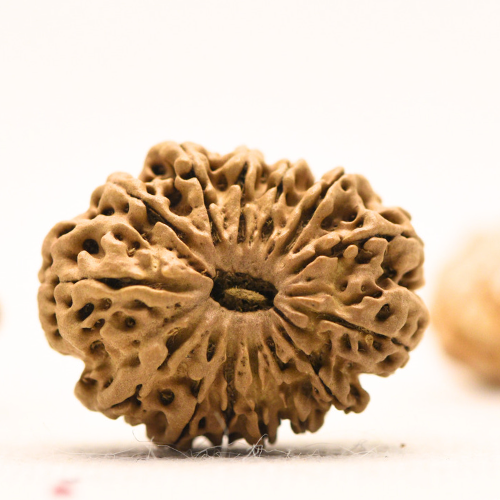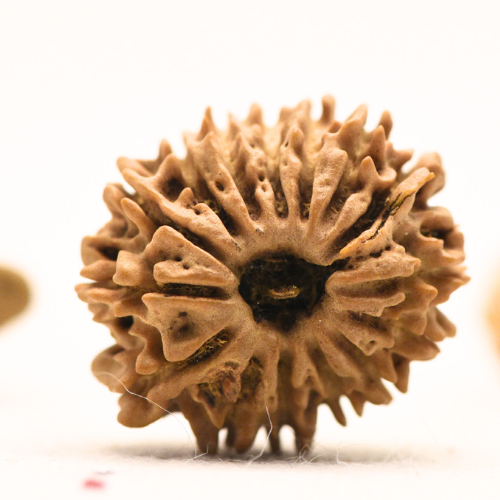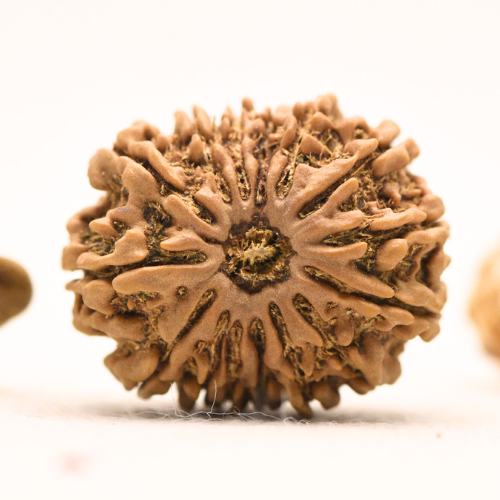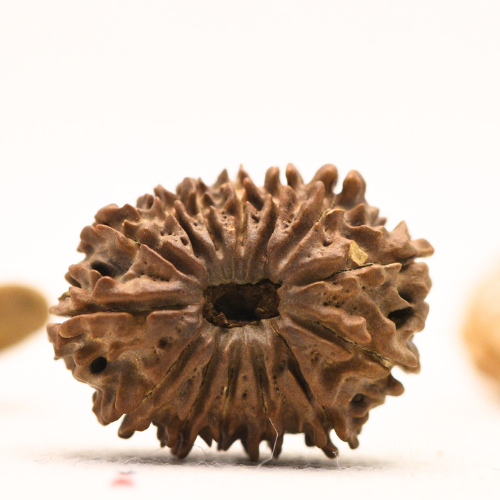About Ma Bhavani Devi
Goddess Bhavani, a version of Parvati and an incarnation of Shakti, is central to Adiyogi Rudraksha And Gemstones 's spiritual rituals and beliefs. Goddess Bhavani's relationship with Adiyogi Rudraksha And Gemstones reflects the company's emphasis on empowerment, protection, and spiritual well-being through their products.
Hinduism is thought to be one of the oldest religions on Earth. It has been practised for thousands of years and is still maintained by new generations, as it will be for centuries. There are various Gods and Goddesses in Hinduism, and millions of devotees adore them.
In Vedic literature, these Devas and Devis are understood to represent natural forces, while a couple represents moral value, with each symbolizing the essence of specific knowledge, creative energy, and remarkable powers. Goddess Bhavani, for example, has a story that ought to be told.
Who is the goddess Bhavani?
According to Hindu folklore, Goddess Bhavani is a violent and terrible form of Goddess Shakti. She assumed this shape during the struggle against Mahishasura. Bhavani Devi is thought to represent Aadi Parashakti. The Bhava of Bhavani is intended to represent Lord Shiva's intrinsic force. In that sense, Bhavani is the Goddess Parvati. When worshipped as Lord Shiva's consort, she is often referred to as'swayambhu' or self-born. It is also believed that the Goddess appeared in the shape of Bhavani and gave blessings on Lord Ram and Hanuman prior to the epic fight in the Ramayana to free Goddess Sita.
The name 'Bhavani' means 'provider of life'. This refers to the power of nature or the source of creative energy. Another name for Goddess Bhavani is Karuna Swaroopini, which means 'full with mercy'. She is regarded as a mother who looks after the needs of her followers while also playing an important part in delivering justice by murdering asuras. Other names for this Devi include Tulaja, Turaja, Tvarita, and Amba.
The renowned Maratha Chhatrapati Shivaji was a huge lover of Goddess Bhavani, and he named his sword Bhavani Talwar. Several Marathi folk tales celebrate her. Shivaji's mother was said to be a huge devotee of Goddess Bhavani. She is thought to have served as a source of inspiration for Maratha warriors during combat, providing them with strength and courage. As a result, she is widely revered and respected throughout Maharashtra.
The Tulja Bhavani festival takes place every year during Navratri (September - October), and the Tulja Bhavani temple is located in Tuljapur, Maharashtra. The shrine features a granite icon of the Goddess, about three feet tall, with eight arms holding weapons and the head of the killed demon Mahishasura. In Gujarat, Goddess Bhavani takes the form of Keshar Bhavani.
Origins of the Goddess Bhavani in Hindu Scriptures
According to the Siva Purana, Bhavani is the highest goddess and partner of Lord Bhava (Sadasiva). The Devi Bhagavatam states that Bhavani Devi is the actual form of Aadhi Parashakti. She is said to be Lord Krishna's sister. Lord Vishnu did penance to enlist Devi's help for the Krishna avatar. This resulted in Devi being born to Yashoda as Sri Krishna's sister. Goddess Bhavani holds a Conch and a Chakra, symbolizing her links to both Vishnu and Krishna. There are significant indications of a brother-sister relationship with Vishnu's avatar of Krishna. Lalitha Sahasranamam discusses how Goddess Bhavani is the deity who continually assists her followers in achieving Mukti.
Iconography of Goddess Bhavani.
Goddess Bhavani is depicted with eight arms, which are used to bear weapons and carry the head of the killed monster Mahishasura. The lowermost right hand holds a trident, the next a knife, the one above an arrow, and the uppermost right hand a chakra. The uppermost left hand holds a shankh, the second a bow, the third a bowl, and the lowermost left hand grips the granny knot of hair on the demon's head. Bhavani Devi's right leg is firmly connected to Mahishasura's torso, while her left leg is on the ground. The demon's head gets stuck between these two legs by the bottom left arm. Goddess Bhavani's vahana is thought to be a lion, hence she is depicted beside the Jungle King. On the backrest, the Goddess's right and left sides are engraved with the sun and moon.
The idol of Goddess Tulja Bhavani in the Tulja Bhavani temple measures approximately 3 feet in height and 2 feet in width. She is beautiful and smiling, having been carved from black stone. She is depicted with eight hands, and her long flowing hair is seen streaming out of the crown. The Goddess is shown with a quiver on her back. Both the sun and moon are visible behind the Goddess. Her mount, a lion, is shown beside her. Sage Markandeya is shown under the lion reciting the Durga-saptashati shlokas. Anubhuti, the lady sage, is depicted on the Devi's left side, hanging in a meditative pose before the Goddess.
Legends about the Goddess Bhavani
According to folklore, a demon named Matang wreaked havoc and mayhem among the devas and humans. They approached Lord Brahma for assistance. Following his advice, they approached Mother Goddess Shakti. The Saptamatrikas (Brahmaṇi, Vaishnavi, Maheshwari, Indraṇi, Kaumari, Varahi, and Chamunda) worked together to destroy the asura and bring harmony to the universe.
Another story tells of Goddess Bhavani slaying Mahishasura, a demon who emerged as a wild buffalo. This is why she is also known as Mahishasura Mardini, or the'slayer of Mahisha the demon.'
The glorious monarch of the Maratha Kingdom, Chhatrapati Shivaji Maharaj, was a devoted devotee of Goddess Bhavani and a frequent visitor to the Tulja Bhavani Temple. Worshippers thought that the Devi gave him a sword called 'The Bhavani Talwar' to help him win his battles.
The temple's legend dates back to the 'Skanda Purana', as stated in the sacred literature. According to this myth, a sage named 'Kardam' and his wife 'Anubhuthi' had a child and lived on Yamunachala Hill, where the temple is now located. After the sage died, his wife Anubhuti performed a penance on the banks of the Mandakini River and asked the Goddess to look after her child.
There was an asura named Kukur who tormented her. The Devi then appeared to rescue Anubhuti and killed the asura (who had taken the appearance of a fearsome buffalo) by chopping off his head. The Goddess murdered him after he appeared in his true form, piercing his chest with the trident. Since then, the Mother Goddess has been known as Bhavani of Tuljapur or Tulja Bhavani.
Characteristic Attributes of Goddess Bhavani
Tulja Bhavani is portrayed as a magnificent and powerful Goddess in Hindu Puranas. She is well-known for defeating asuras who threaten the balance of the universe. The Goddess is seen as a kind mother who looks after the well-being of women and children. She is known for protecting her followers from the faults of envy, self-centeredness, wicked impulses, anger, rage, and ego. At the same time, she embodies the Supreme Being who maintains moral order and righteousness in the universe. She plays an important part in bringing justice by slaying demons. But she is also a Goddess who is merciful and works to provide for her followers.
Vahana of Goddess Bhavani.
Goddess Bhavani has a lion as her vahana (mount or vehicle). She is frequently represented with a lion in numerous images. Why the lion? The fearsome animal is thought to represent the Goddess's might, unwavering energy, and immense determination, which she bestows upon her worshipers.
A lion is considered the epitome of strength, courage, and leadership, all of which the Goddess embodies. She works beside the lion to bring about Dharma and slaughter the asuras who strive to disrupt the tranquil cosmos. The lion associated with the Devi symbolizes success and fortitude.
Interesting Facts About Goddess Bhavani
According to the Hindu Puranas, Goddess Tulja Bhavani manifested her heavenly presence throughout all Yugas (ages). She guided Lord Ram in the Treta Yuga and blessed Yudhishthira in the Dwapar Yuga during the great war of Mahabharata. She proved to be an endless source of amazing inspiration for Shivaji Maharaj during the Kali Yuga.
Tuljabhavani Temple is considered one of the 51 Shaktipeethas dedicated to Goddess Shakti. In Maharashtra's Osmanabad district, Tulja Bhavani is known as Bhagwati, Durga, Ambabai, Tukai, and Jagadamba.
Temples dedicated to the goddess Bhavani
There are various temples dedicated to Goddess Bhavani in India. However, two of the most prominent temples dedicated to the fearsome Goddess are the Tulja Bhavani Temple in Maharashtra and the Kheer Bhavani Temple in Jammu and Kashmir.
Tulja Bhavani Temple
It is a Hindu temple dedicated to the goddess Bhavani. It is one of the 51 Shaktipeethas and can be found in Tuljapur, Osmanabad, Maharashtra. The temple was built in the twelveth century CE. Chhatrapati Shivaji Maharaj, the ruler of the Maratha Kingdom, used to visit this shrine to seek the Goddess' blessings. According to mythology, the Devi provided him with a sword to use in his travels, ensuring his victory.
Kheer Bhavani temple.
The Kheer Bhavani Temple is an ancient Hindu shrine located in Kashmir, India. The temple is located 22 kilometers east of Srinagar and is surrounded by picturesque Chinar trees. It is built above a holy spring, which is said to change colour with each season.
This temple is mentioned in various ancient Hindu scriptures, and countless legends are associated with it. It is believed that Lord Ram sent Hanuman to relocate the temple from Sri Lanka to India since the Goddess was enraged by Ravana's atrocious behavior and did not want to be a spectator of his bloodshed. One of the temples' distinguishing qualities is the continued tradition of giving kheer to the presiding deity in the spring, with some pilgrims preparing the meal themselves. It is a popular and well-known Hindu pilgrimage site, with many devotees visiting the temple to seek the Goddess' blessings.
Festivals Dedicated to Goddess Bhavani
Gudi Padwa, which falls in the month of Chaitra, is a very significant celebration at the Tulja Bhavani temple dedicated to Goddess Bhavani. Shriral Sashti, Lalita Panchami, Makar Sankranti, and Ratha Saptami are among the numerous festivals celebrated with great fanfare at the temple. Navaratri is also celebrated extensively at the sacred place, and it culminates with Dussehra.
Shukla Paksha Ashtami is a festival held at Kheer Bhavani Temple. Worshipers fast on this auspicious day and gather at the shrine to offer prayers and seek blessings. Jesht Ashtami is another occasion when devotees attend the temple to catch a sight of the goddess. The event concludes with a Maha-Yagna, which is performed to make the Goddess happy.
How to worship Goddess Bhavani (Maa Bhavani Puja Vidhi)?
During the Chaitra Navratri festival, devotees can do the Bhavani Utpatti rite. Bhavani Jayanti is an auspicious day dedicated to the Goddess. Worshippers can perform Basanti Durga Puja on this day.
Benefits of worshiping Goddess Bhavani
According to Adi Shankaracharya, devotees who recite Goddess Bhavani's name daily with full earnestness will not experience grief, disease, or untimely death. She is also a divinity that is frequently invoked by women during labor. The Goddess is known for gifting her worshipers with courage and strength. She bestows them with money, success, and wisdom.
The Goddess shields her followers from sins like selfishness, wrath, envy, ego, and wicked desires. Devotees will be able to overcome obstacles and negativity, as well as get rid of Pitru Dosha, thanks to the grace of Goddess Bhavani.





